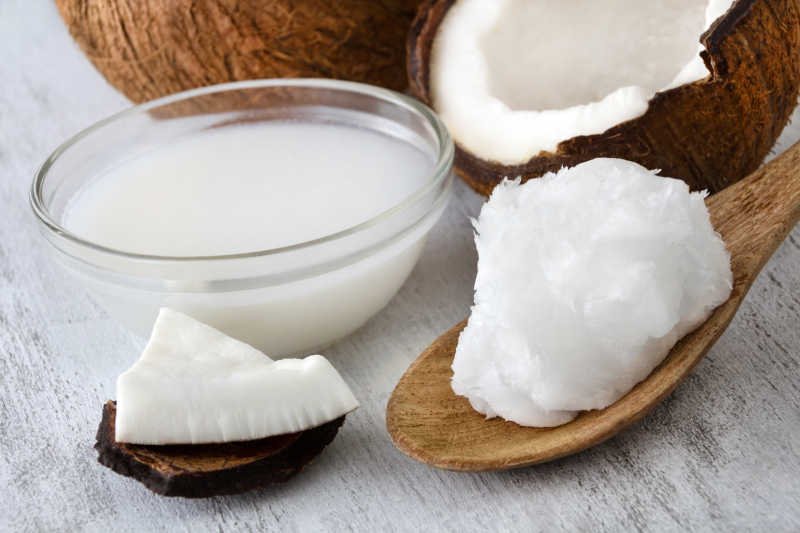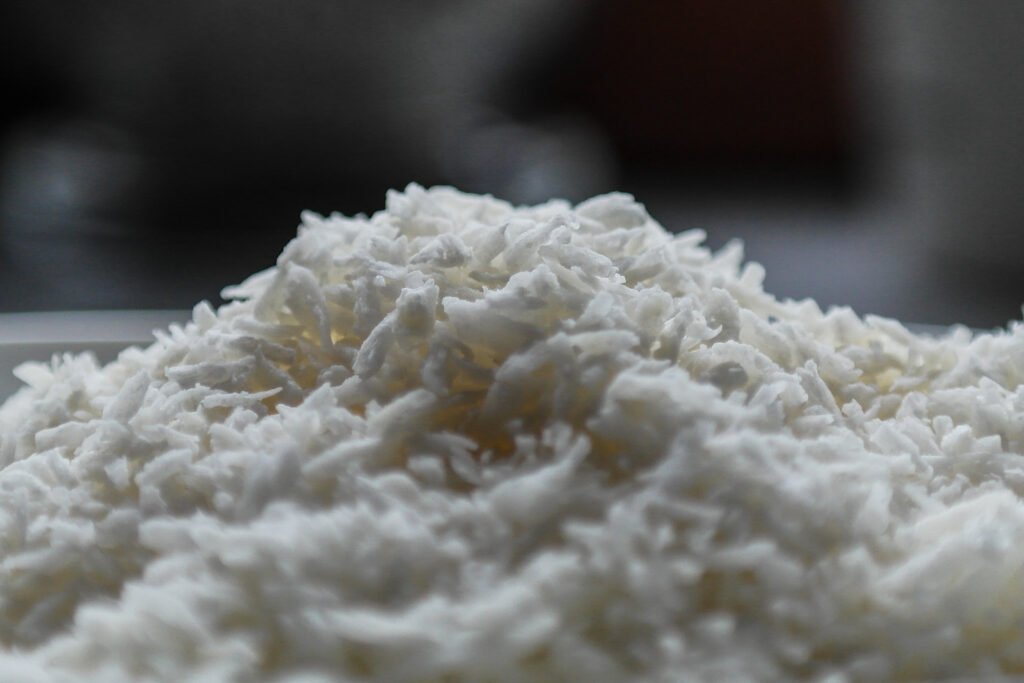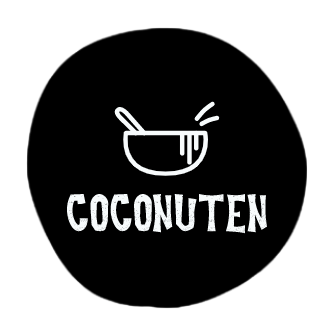Coconut milk as well as the lotion is a white, opaque protein-oil-water emulsion used in several traditional Asian cuisines. It is a milklike liquid gotten by manually or mechanically extracting fresh kernel.
The top-quality features are affected by several aspects, such as the selection of nuts, water high quality as well as volume made use of for coconut milk removal. Due to its high oil content, coconut milk items are highly at risk to chemical and biochemical wasting, like lipid oxidation.
Coconut milk as well as the lotion is a white, opaque protein-oil-water emulsion used in several traditional Asian cuisines. It is a milklike liquid gotten by manually or mechanically extracting fresh kernel.
The top-quality features are affected by several aspects, such as the selection of nuts, water high quality as well as volume made use of for coconut milk removal. Due to its high oil content, coconut milk items are highly at risk to chemical and biochemical wasting, like lipid oxidation.
For coconut milk as well as lotion products, fat material is an important requirement for categorization. According to Codex Standards for Aqueous coconut items (CODEX STAN 240-2003), coconut milk must include a minimum of 10% fat, 2.7% non-fat solids, as well as 12.7-25.3% complete solids. For coconut lotion, it needs to consist of at least 20% fat, 5.4% non-fat solids as well as 25.4-37.3% total solids.
STRUCTURE OF COCONUT MILK
The structure of coconut milk is affected by the make-up of coconut kernels. It is very important to highlight that the distinction in oil content at different ages of the coconut bit connects to the return and top quality of coconut milk acquired.
While a young coconut at 8 to 9 months old has only around 18-26% oil web content, a fully grown coconut at 10-13 months has up to 43% oil material. Consequently, these fully grown coconuts are usually collected for coconut milk production..
Coconut milk is a very abundant tool that supports the development of usual perishing microorganisms, typically presented by means of infected shells, tools, processing tools as well as trainers.
FEATURES AND ALSO REACTIONS OF COCONUT MILK.
Like coconut water, the residential properties of coconut milk are affected by extraction, solution, storage and also handling. Its flavour profile is built up from acids, protein, sugars, phenolic compounds, mineral content and also oil material. Its look is mainly affected by colour reactions and also the quantities as well as size of the oil blobs.
Chemical wear and tear (mainly lipid autoxidation and lipolysis), as well as microbiological destruction, are the two major reactions that impact the quality of coconut milk. Similar to coconut water, coconut milk is likewise impacted by browning reactions. Therefore, the white milklike colour turns slightly greyish.
CHEMICAL DETERIORATION (LIPID OXIDATION AND ALSO LIPOLYSIS).
When chemical wear and tear takes place, lipid oxidation and also lipolysis.
of unsaturated and also saturated fats in coconut milk leads to unacceptable preference as well as odors. The hydrolysis of triglycerides can be particularly fast when catalyzed by the lipase enzyme. The release of short-chain fats, particularly butyric, caproic, caprylic, and capric acids, can trigger strong off smells. Medium-chain fatty acids, such as lauric and also myristic acids that are regular of coconut.
oil likewise generates a distinct soapy taste. Lastly, oxidative rancidity occurs when unsaturated fats are oxidized..
The oil web content of coconut milk is characteristically made up of medium chain triglycerides of hydrogenated fat. About 5.5% of the.
oil material is monounsaturated fatty acids as well as an additional 2% is polyunsaturated fats. These triglycerides are at risk to hydrolysis right into cost-free fats by lipoxygenase and lipase enzymes, which are normally existing in coconut milk..
DISCOLOURATION.
Similar to coconut water, discolouration responses in coconut meat are caused by enzymatic (polyphenol ppo, peroxidase as well as oxidase, POD) reactions (Siriwongwilaichat et al., 2004). This leads to discolouration of coconut milk. Discolouration responses in coconut milk are additionally non-enzymatic browning. The colour, turbidity, and also nontransparent appearance of coconut milk are likewise impacted by the dimension of the distributed oil blobs which have light spreading properties. In general, when oil beads are smaller, the reflectance increases, giving a whiter colour to coconut milk.
SEPARATION.
Depending on customer assumption, the separation of coconut milk right into two layers is rather subjective. When entrusted to stand, coconut milk often tends to divide into a water-rich base and also an oil-rich top.

When utilized to prepare standard Oriental food, coconut milk can also contribute to the final preference and also look of the recipe. In most ASEAN nations, consumers view recipes to be of top quality when it includes a layer of oil on top. In Sri Lanka, the very same meals are viewed to be of poor high quality.
Coconut milk is an oil-in-water solution. This implies that coconut milk is insoluble or miscible in water, and has a fine diffusion of minute beads of coconut oil in water. Additionally, the solution may also include emulsifiers and thickening agents that hold these 2 phases with each other. Coconut milk has naturally happening proteins like globulins as well as albumins, as well as phospholipids like lecithin and also cephalin to work as natural emulsifiers. To some extent, these assist to stabilize the solution, acting as the surface area between oil and also water.
As with all emulsions, coconut milk is susceptible and literally unstable to phase separation as the healthy protein web content and top quality in coconut milk is not enough to maintain fat beads.
Emulsion security is quantified by the creaming index of coconut milk examples, which results from the action of gravitational force on phases with various densities. A higher creaming index indicates the propensity to accumulate oil beads, which separates the emulsion as well as undercuts.
Flocculation is one more destabilizing device for solutions, as fat beads relocate as groups rather than as individuals. This enhances the chances of creaming. As opposed to flocculation, coalescence involves the tear of interfacial film, a signing up with of blobs, and also a reduction in the interfacial location. Call of globules should avert coalescence, and this can occur through flocculation, creaming, or Brownian movements when fragments move arbitrarily.
Generally, making use of emulsifiers and thickening agents (stabilizers) at degrees less than 2% with homogenization can enhance the solution security of coconut milk.
Emulsifiers are amphiphilic, surface-active substances that aid to hamper the stage separation. This is done by taking into the oil-water user interface, consequently reducing the interfacial tension. Proteins that normally take place in coconut can act as emulsifiers. For industrial production, emulsifiers can be contributed to improving the stability for longer item service life.
Enlarging stabilizers or agents are hydrocolloid products that provide stabilizing for emulsions, suspensions, and general thickening buildings. They are made use of commonly for their distinct textural, architectural, and practical qualities in food. Lots do not operate as true emulsifiers as they do not have the necessary mix of solid hydrophilic as well as lipophilic homes in a single particle. Rather, they support the emulsions by enhancing the viscosity or enlarging the product. This decreases the rate of separation between the oil as well as water layers.

POTEIN COMMUNICATIONS.
Percentages of healthy protein in coconut milk serve as all-natural emulsifiers. As billed and also surface-active molecules, they can assist improve the security as well as create of an oil-in-water emulsion. Taking in at the surface of the droplets, healthy protein gives repulsive interactions like electrostatic and also steric effects to stop bead gathering. On a dry basis, coconut milk includes 5-10% protein, 80% of which are albumin as well as globulins. Only 30% is dissolved in the aqueous phase, as well as the undissolved proteins act as emulsifying agents carefully connected with oil globules..
Coconut healthy protein is ineffective at producing tiny beads within the homogenizer, as well as avoiding oil droplet aggregation throughout or after homogenization. Coconut protein can just assist to support the oil-in-water emulsion to a certain level. This is why when left to stand, the physical separation of coconut milk right into water-rich as well as oil-rich layers can not be avoided.
RESULTS OF ECOLOGICAL ELEMENTS AS WELL AS ADDITIVES ON TOP QUALITY.
GATHERING AS WELL AS PRE-TREATMENT OF COCONUT BIT.
For the optimal return of coconut milk, the nut must be 10-13 months developed, as oil material goes to its highest possible. After the coconut is dehusked, deshelled and pared (optional), cleaning is done to decrease microbiological destruction. Coconut bits are washed with diluted anti-microbial solutions and also rinsed with drinkable water.
HOMOGENIZATION.
Homogenization is a means of maintaining the coconut milk oil-in- water against gravity separation into two phases– a water-rich base as well as fat-rich top. It creates the disruption of oil beads right into much smaller ones as well as likewise divides the blobs that are connected together.
Usually, this is combined with emulsifiers that function as surfactants that maintain the globules apart. Occasionally, homogenization is additionally paired with stabilizers. This boosts the thickness of coconut milk to hold the oil blobs within its colloidal network.
OXYGEN.
Oxygen exposure can cause the rancidity of coconut milk. This is sped up by microbiological degradation, or the enzyme called lipase. It is vital to lessen oxygen exposure to avoid rancidity.
ADDITIVES.
Including emulsifiers as well as stabilizers.
To prevent instability in coconut milk, stabilizers can be used to slow down stage separation throughout extended standing. It can also thicken at the continual stage. Emulsifiers can be added to absorb at the oil interface..
Antioxidants.
Anti-oxidants are added to expand the life span of coconut milk items. This is done by scavenging oxygen or totally free radicals which lessen browning reactions or lipid oxidation. In particular, sodium metabisulphite is generally used to aid slow down the non-enzymatic browning of coconut milk.

MICROBIOLOGY OF COCONUT MILK.
Like coconut water, coconut milk is likewise vulnerable to microbiological damage. Water task, pH, temperature, oxygen schedule, as well as light impacts the growth rate of microorganisms. Specifically, water activity is specified as the ratio of water vapour stress in food to that of distilled water, at the exact same temperature. When an option ends up being much more concentrated, vapour pressure reduces. Water task likewise drops from a maximum worth of one for distilled water.
The adhering to systems are the significant ones worried about coconut milk and also its items..
BREAK DOWN OF CARBOHYDRATES.
The failure of carbohydrates in coconut milk leads to the production of lactic as well as acetic acids causing a decrease in the pH levels. This is particularly so via fermentation pathways. Because of this, a sour preference develops in coconut milk.
MALFUNCTION OF OILS.
According to the Codex meaning (CODEX STAN 240-2003), coconut milk as well as cream must include at the very least 10% as well as 20% oil web content respectively. With such a substantial proportion of oil, it is really essential to decrease microbial damage triggered by lipolysis, likewise called oil failure. Because of this, rancidity occurs, which generate an off-flavour development.
While pure oil can not be broken down by bacteria, oil in water emulsions or in contact with water can be conveniently broken down by bacteria. This is due to the fact that water is necessary for microbial chemical split..
BREAKDOWN OF HEALTHY PROTEIN.
Healthy protein denaturation is affected by the pH level of the system. The pH decrease is triggered by a breakdown of carbohydrates into acids. When the pH approaches the isoelectric factor of the protein, it curdles as they lose their repulsive charges..
The malfunction of protein, otherwise known as proteolysis in coconut milk, can additionally be catalyzed by proteases produced by microorganisms. Proteins and also their basic amino acids have a broad mix of chemical aspects.
According to Codex Specifications for Aqueous coconut products (CODEX STAN 240-2003), coconut milk should include at least 10% fat, 2.7% non-fat solids, and 12.7-25.3% overall solids. Like coconut water, the buildings of coconut milk are affected by extraction, handling, storage space and formulation. Comparable to coconut water, coconut milk is likewise influenced by browning reactions. The colour, turbidity, and nontransparent look of coconut milk is likewise impacted by the size of the distributed oil beads which have light spreading residential properties. Like coconut water, coconut milk is also susceptible to microbiological damage.

